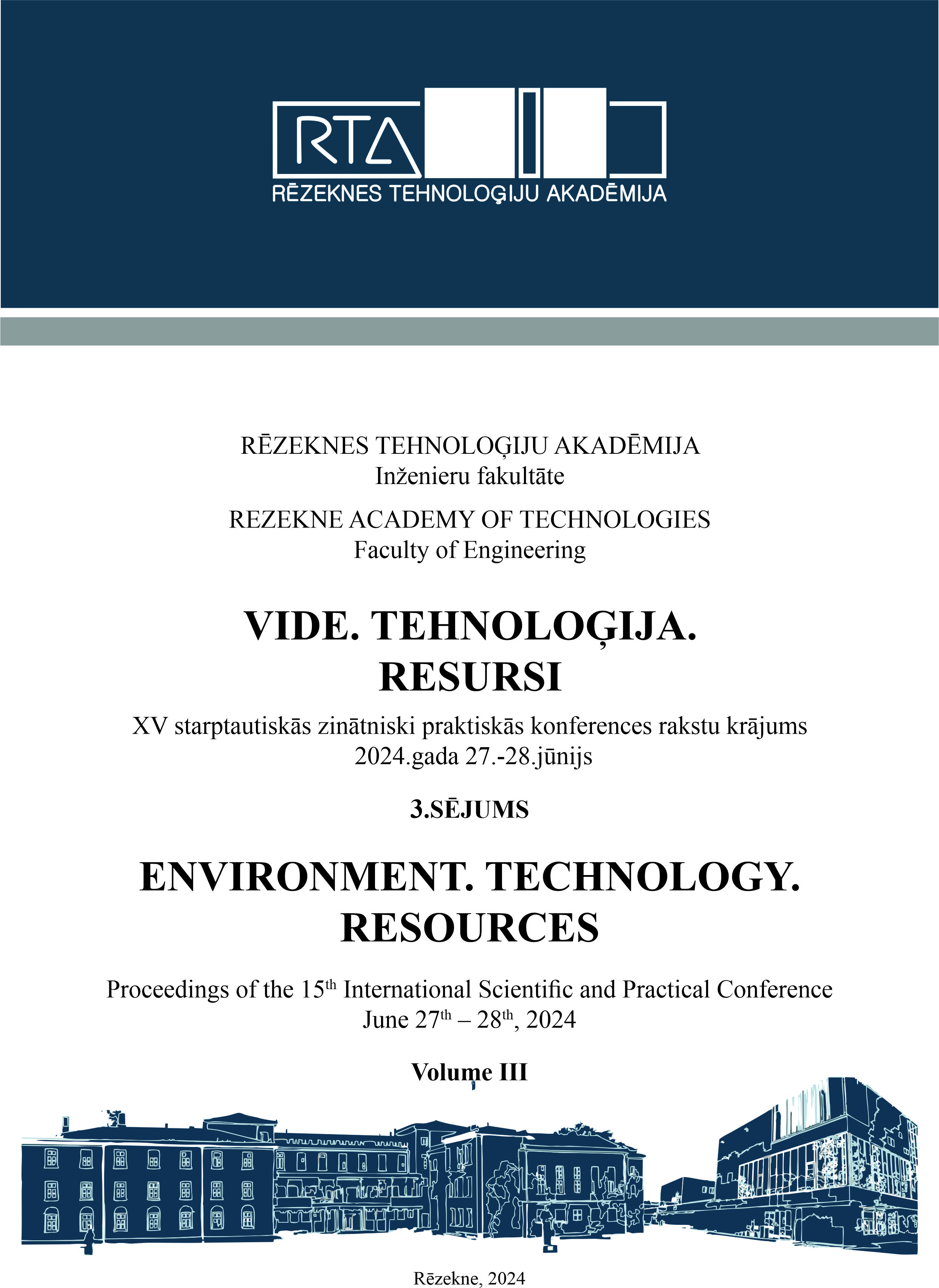INVESTIGATION OF THE EFFECT OF LASER POWER, SPEED AND FREQUENCY ON SURFACE ROUGHNESS AND COLOR MARKING ON AISI 304
DOI:
https://doi.org/10.17770/etr2024vol3.8174Keywords:
AISI 304, Fiber laser, Laser color marking, LIPSS, Surface roughnessAbstract
Austenitic steels are widely used in machine and tool making, and many of the products produced are marked with ink or impact marking systems. This study aims to investigate contrast color marking methods using advanced, environmentally friendly fiber laser systems.
We developed marking matrices with 14 columns and 6 rows, each square measuring 5x5 mm. We investigated the effect of scanning speed, laser power and frequency on color marking and surface roughness. Our results showed that increasing the scanning speed leads to a decrease roughness, resulting in different colored markings. As the average power increased, the marking changed to different colors. At low frequencies of 50 kHz, the color marking was observed with a lower contrast saturation, while increasing the frequency to 300 kHz resulted in a more homogeneous and contrast with brighter and more saturated colors. These results provide valuable information for improving color marking techniques using laser systems in the manufacturing industry.
References
Lazov, L., Deneva, H., Narica, P., Factors influencing the color laser marking, Vide. Tehnologija. Resursi - Environment, Technology, Resources, 2015, 1, pp. 102–107, DOI: 10.17770/etr2015vol1.223
Angelov, N., Teirumnieks, E., Lazov, L., Influence of pulse duration on the process of laser marking of CT80 carbon tool steel products, Laser Physics, 2021, 31(4), 045601, DOI: 10.1088/1555-6611/abe5afC.
Leone, S. Genna, G. Caprino, I. De Iorio, AISI 304 stainless steel marking by a Q-switched diode pumped Nd:YAG laser, Journal of Materials Processing Technology, V 210, 10, 2010, p. 1297-1303, https://doi.org/10.1016/j.jmatprotec.2010.03.018.
M. Pandey, B. Doloi, Parametric analysis on fiber laser marking characteristics for generation of square shaped marked surface on stainless steel 304, Materials Today: Proceedings, Volume 56, Part 4, 2022, p 1908-1913, https://doi.org/10.1016/j.matpr.2021.11.169.
L.Lazov, E. Teirumnieks, N. Angelov, E. Yankov, Modification of the roughness of 304 stainless steel by laser surface texturing (LST), Laser Physics, 2023, 33 046001
DOI 10.1088/1555-6611/acbb76
B. Krawczyk, P.Cook, et al.,Atmospheric chloride-induced stress corrosion cracking of laser engraved type 316L stainless steel, Corrosion Science,2018, Volume 142,p. 93-101, DOI:org/10.1016/j.corsci.2018.07.016.
L. Lazov, E. Teirumnieks, T. Karadzhov, N. Angelov, Influence of power density and frequency of the process of laser marking of steel products, Infrared Physics and Technology, 2021, 116, 103783, DOI: 10.1016/j.infrared.2021.103783
E.H. Amara, F. Haïd, A. Noukaz, “Experimental investigations on fiber laser color marking of steels,” Appl. Surf. Sci., vol. 351, pp. 1–12, Oct. 2015,
https://doi.org/10.1016/j.apsusc.2015.05.095.
Narica, P., Lazov, L., Teilans, A., ...Teirumnieks, E., Cacivkins, P., Method for color laser marking process optimization with the use of genetic algorithms, Vide. Tehnologija. Resursi - Environment, Technology, Resources, 2017, 2, pp. 101–106 DOI:10.17770/etr2017vol2.2607
V. Veiko, G. Odintsova, at. Al., Development of complete color palette based on spectrophotometric measurements of steel oxidation results for enhancement of color laser marking technology,Materials & Design,Volume 89,2016, p. 684-688, https://doi.org/10.1016/j.matdes.2015.10.030.
H. Roozbahani et al., Laser color marking: repeatability, stability and resistance against mechanical, chemical and environmental effects, IEEE Access, 2020, DOI: 10.1109/ACCESS.2020.3040744
F. Luo, W. Ong, Y. Guan, F. Li, S. Sun, G.C. Lim, M. Hong, “Study of micro/nanostructures formed by a nanosecond laser in gaseous environments for stainless steel surface coloring,” Appl. Surf. Sci., vol. 328, pp. 405–409, Feb. 2015
Lazov, L., Angelov, N. Influence of some technological parameters on the contrast of laser marking on the fly. Laser Phys. 22, 1755–1758 (2012). https://doi.org/10.1134/S1054660X12110084
Livakas N, Skoulas E, Stratakis E. Omnidirectional iridescence via cylindrically-polarized femtosecond laser processing. Opto-Electron Adv 3, 190035 (2020). doi: 10.29026/oea.2020.190035
W. Shi, A. Schulzgen, R. Amezcua, X. Zhu, S. Alam, “Fiber lasers and their applications: Introduction,” J. Opt. Soc. Am. B, vol. 34, Mar. 2017,
https://doi: 10.1364/JOSAB.34.00FLA1
W. Shi, A. Schulzgen, R. Amezcua, X. Zhu, S. Alam, “Fiber lasers and their applications: Introduction,” J. Opt. Soc. Am. B, vol. 34, Mar. 2017,
https://doi: 10.1364/JOSAB.34.00FLA1.
D. P. Adams, V.C. Hodges, D.A. Hirschfeld, M.A. Rodriguez, J.P. McDonald, P.G. Kotula, “Nanosecond pulsed laser irradiation of stainless steel 304L: Oxide growth and effects on underlying metal, Surf. and Coat. Technol., vol. 222, p. 1–8, 2013, DOI: org/10.1016/j.surfcoat.2012.12.044
Downloads
Published
Issue
Section
License
Copyright (c) 2024 Gatis Tutins, Imants Adijans, Emil Yankov, Artis Bikovs

This work is licensed under a Creative Commons Attribution 4.0 International License.



